Thank you to all who commented on the state of a local hedge after my blog on Wednesday evening. Opinions seemed to be divided between insect damage, spray drift and some nasty chemical ending up in the ditch at the foot of the hedge.
I went back to the site yesterday evening to have another look and to take some more photographs.
Let me first stress that the affected length of hedgerow is 1.1 miles long – I did say it was a long stretch but this time I measured it. It therefore covers the boundary to several fields.
There is some vegetation growing back from the hedge – but not the hedge itself (and it’s difficult to tell (for me anyway) whether it was mostly blackthorn or hawthorn) – and some of the regrowth has leaves that look odd (Photos 3 & 4).
There is a ditch along much of the foot of the hedgerow (but not quite all of it) but the lowest point topographically is about one third along the stretch which means that there is no way that some pollutant could travel downhill for 2/3 of a mile (I imagine) and then uphill for 1/3 of a mile (or the other way around).
As one drives down the road, 99% of the ‘damage’ is on the same side of the road (and perhaps the other 1% is caused independently anyway). The damage is always worse on the roadside side of the hedge compared with the field-side side of the hedge (see photos 1 & 2 as a pair, and photos 5 & 6 as another pair). Sometimes the field-side is almost as badly ‘damaged’ (Photos 1 & 2) and sometimes it looks completely undamaged (Photos 5 & 6). This creates the very strong impression that whatever caused the ‘damage’ came from the road rather than the field.
Here are some photos:
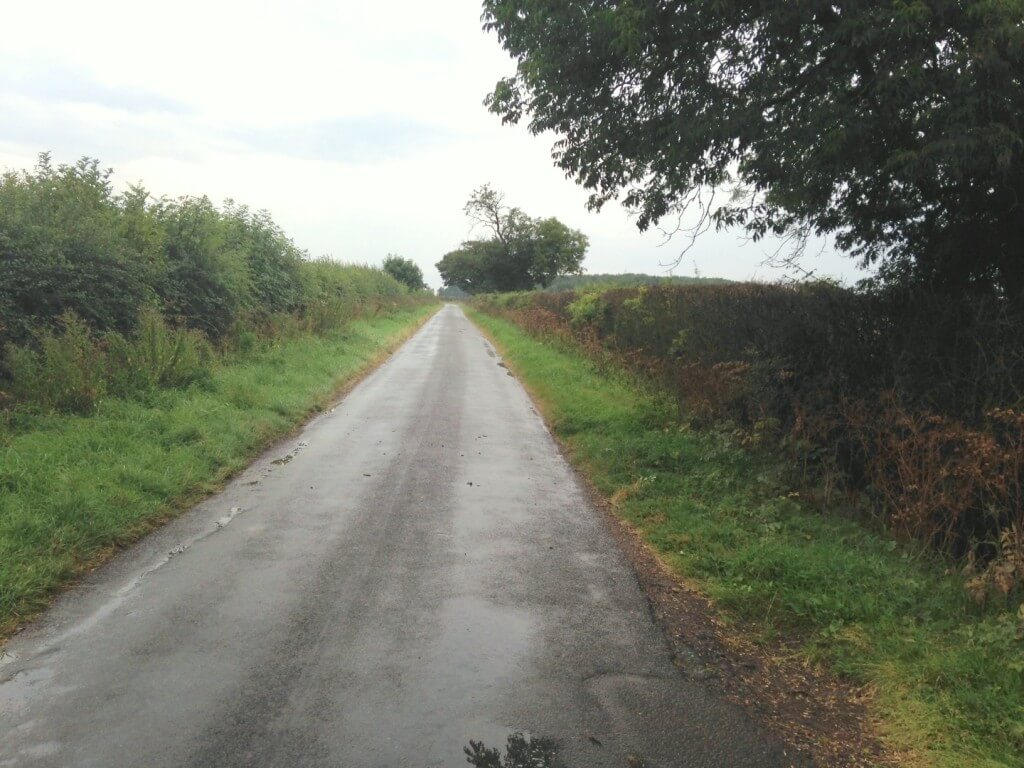
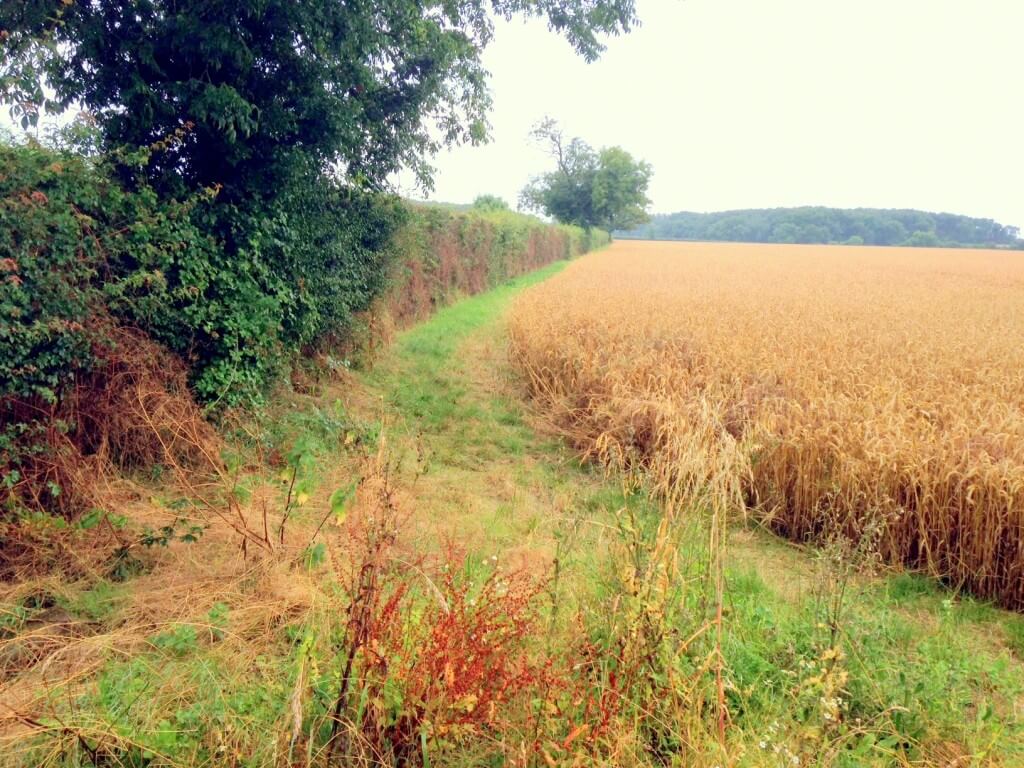
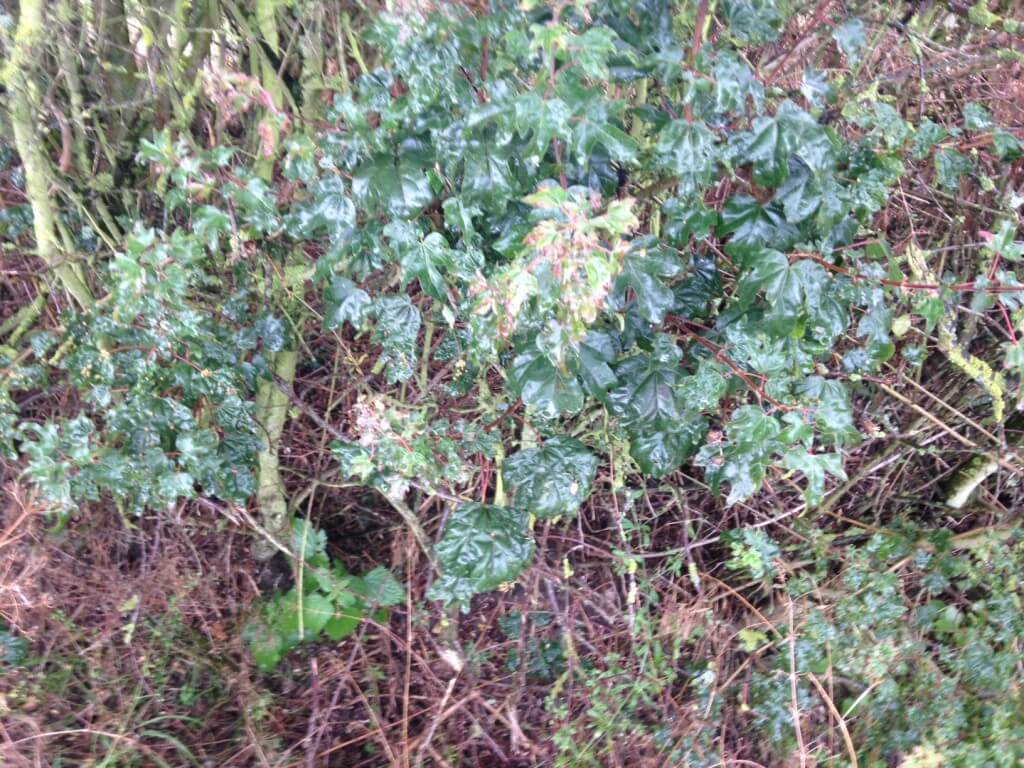
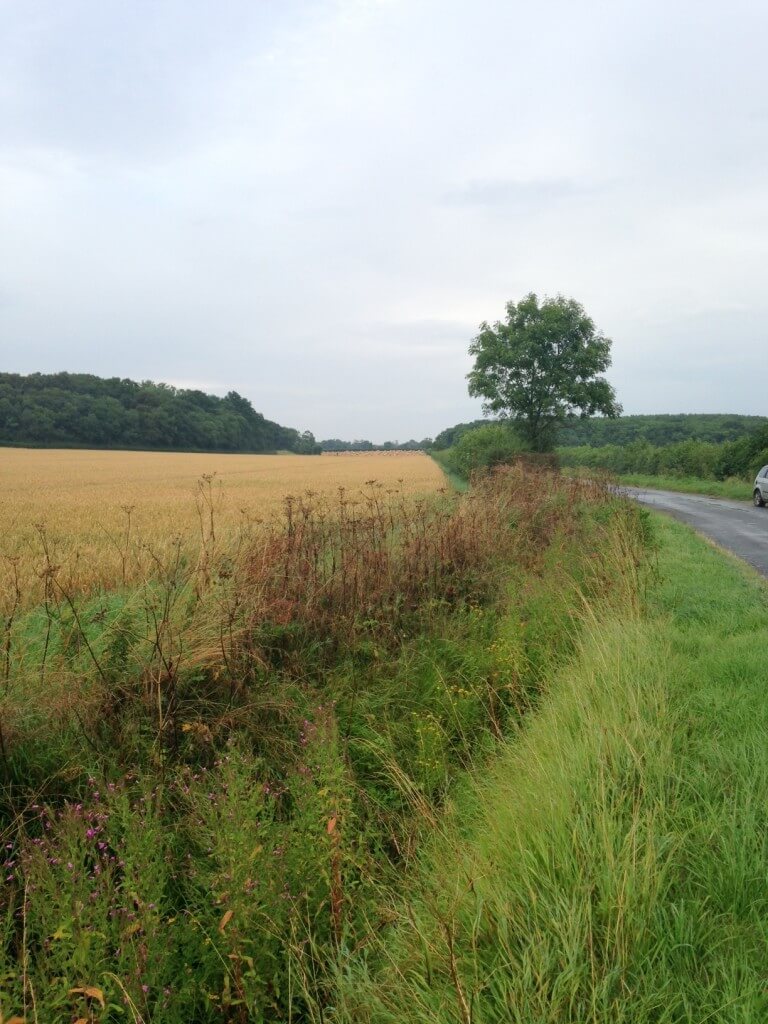
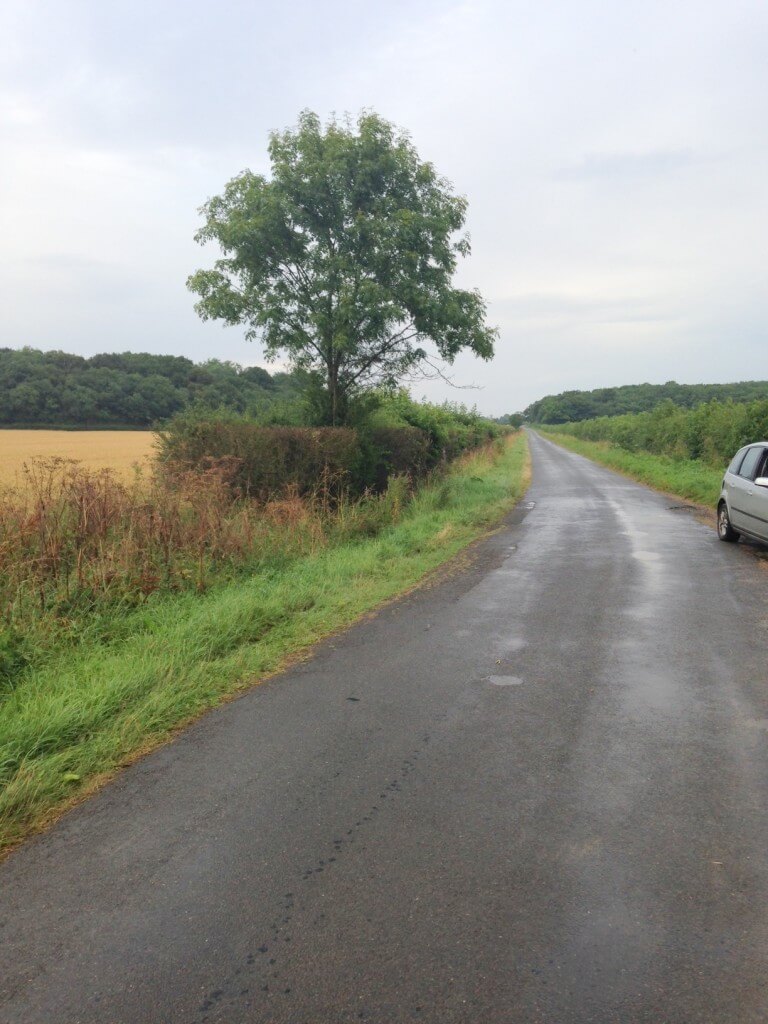
[registration_form]
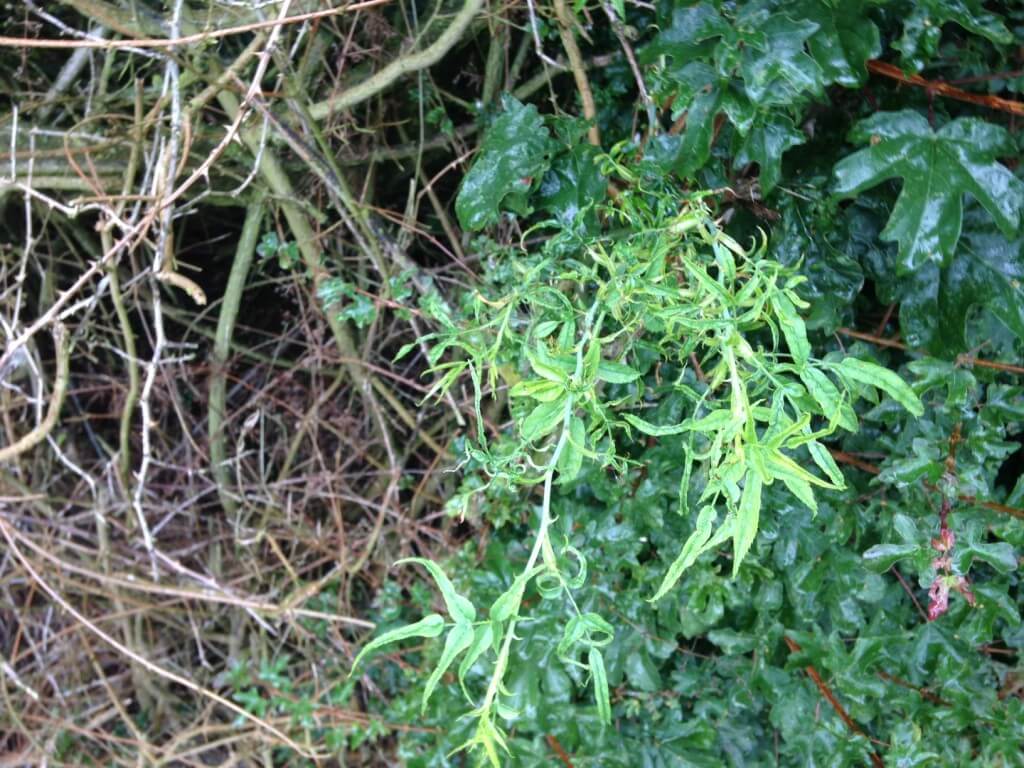
My best guess from all the photographic and descriptive evidence is it’s been deliberately sprayed with Round-up by someone from the road side of the hedge in an effort to kill the whole hedge – that stunted regrowth looks typical of the effect of glyphosate on a woody species! The next question is who by? and why? the farmer? someone with a grudge?
I can’t see what evidence there is that it’s been deliberately sprayed, surely it could be a sprayer accidently left on. There might be a motivation for getting rid of a hedge between fields if you wanted a bigger field but why on earth would you want to kill a hedge by an road? + if it was a year or so ago the grass on the verge would have recovered – ort it might have been a selective herbicide which does not kill grass.
ps now your a famous author maybe your next book could be an ecological who dunnit?
The sprayer accidentally left running theory doesn’t make any sense to me. It is not very probable that the driver would be able to continue down the road with the spray boom in the horizontal position (it wouldn’t have got out the gate for a start) and if they were folded up (a) it seems to me the operator would have noticed if it was still spraying when folding them and (b) if somehow the machine was still spraying as it was driven up the road then, without gravity assistance, I don’t see that the spray would have reached the hedge so completely and thoroughly as to kill it all the way along. It is also seems that the verge next to the hedge seems quite lush and green.
You might be right – however surely the fact that some of the hedge is still alive on the field side suggests that whatever it is came at the hedge from the road side and not through the roots. If it had come through the roots it would have come up the trunk and I can’t see how it would have affected one side more than the other.
I don’t know enough about tractor mounted sprayers – can they fold up automatically? Could they get switched back on?
giles – this seems to be the puzzle.I agree that it looks as if the ‘assault’ came from the road but what could it be? A few farmers I have spoken to can’t imagine it is possible to do it with a sprayer either by design or accident. puzzled.
Which still leaves the grudge explanation – and many possible reasons can lie behind a grudge! Such a deliberate act would have had to have been carried out by someone capable of using a hand-held spray lance with a supply of glyphosate (both of which only farmers tend to possess) from a tractor or other vehicle moving steadily along the road to produce such a consistent effect along the whole length of the hedge. Those distorted growth symptoms on the rose and ivy are certainly consistent with glyphosate spray ‘damage’!
Hi Mark – Interesting that hedgerow trees look healthy – even the fairly young (and therefore not so deep rooted?) ash in photo 6. Although in both a small lower branch is leafless – this might just be that both have been shaded out though that seems less likely for the younger tree – co-incidence? The comments assumed something attacking the roots rather than the leaves – I agree this seems much more likely.
The odd looking regrowth leaves in photos 4 and 5 look like mostly field maple – so has whatever happened been more harmful to hawthorn and/or blackthorn? Or was the hedge more mixed than that? (Giles’ comment on Weds referred to measuring a hedge by the variety of species – this is known as ‘Hooper’s rule’ I believe). I can see some young ash in the hedge on the ‘good’ side of the road.
In photo 1 the road appears to have a slight camber towards the damaged side. Is it possible that something harmful washed off the road and accumulated in the ditch by the hedge? Chemical spill or even spilt fuel from a collision? It would seem unlikely on a dead straight bit of road with light traffic, but then I see quite a lot of “unlikely” driving… and perhaps the collision could have happened on the bend near the layby where the car is parked in photo 6 and spilt something run round the bend into the ditch. But then again surely the local farmer would know about it? And how would it have killed a hedge 1.1 miles long? (unless there was a lot of water running off the road and flooding the ditch along it’s length – we did just endure a very wet winter).
It would seem a good idea to report this to someone as Filbert suggested (the EA? local authority?). If something is that efficient at killing a tough old hawthorn hedge, it might not be terribly good for anything else that came into contact with it. It would also be interesting to know once and for all what the cause was…
Quite a mystery Mark! Normally for inconsistency, I would suggest a number of coincidental factors but I think that would be special pleading in this case. It seems more likely to be a single agency but I am at a loss to suggest what that could be and I hereby retract my original theory. I still suspect a chemical agent (possibly but not necessarily essentially) in conjunction with physical agent rather than something biological.
Its doubtful in this lowland situation that the hedge would have been as a threat to grouse by gamekeepers…but given their association with illegal toxins I wouldn’t rule it out completely.
On the other hand…you say there is a ditch, which is an open water course and therefore the Environment Agency could be invited to give a view?
We can go on making plausible guesses until the cows come home but what it needs is a body with the wherewithall to analyse plant tissue and soil and identify the toxic agent and its concentration. This is a job for the EA because there was/is a clear potential pollution of surface- or ground-water. The problem is the timing – it happened some time ago and they only tend to turn out for serious and immediate water pollution. We are all supposed to report pollution if we see it.
Mark
The Hedgerow Regulations 1997 protect most countryside
Hedges from uprooting or otherwise being destroyed. The
Local planning authority are responsible for enforcing the Regs.
Have you reported it to them so that they can investigate?
Mark, certainly a mystery and one I don’t necesarrily know the answer to. Having read people’s comments, some make sense, whilst others of your followers obviously like a good conspiracy theory. I look forward to your ecological who done it novel.
1. I am convinced the farmer did not poison his own hedge, first the damage is from the road side, second the farmer obviously part-takes in environmental schemes as there is a 2m margin on the field side, third it is too public if they were so inclined.
2. It does appear similar symptoms to glyphosate or other pesticide damage looking at the leaves. However as we discussed and others comments, this is impossible to do with a passing sprayer down the road without killing off surrounding verge. I also discount toxins in the ditch, or poison being taken up by the roots (if that was the case both sides of the hedge would be damaged equally). No need to get the EA involved on that one.
3. Vandalism due to grudge is unlikely also as it is so evenly done and for such a distance. Typical vandalism from my experience is a brick through a tractor windscreen when parked overnight in a field.
4. I discount the dead umbeliferea (keck) this has just died off naturally now we are in August – ours has around our farm.
My suggestion of a possible cause. Could it be from the hedge being cut during a heavy frost and thus killing the growing points? I am only possing this question. Last year we only had two frosts in the whole winter and they were mild, where as the previous winter saw temperatures down to -18C which could potentially damage the hedge. If however this was the case from two years ago, I think the hedge would by now be recovering and the leaves would be healthy, but it is the only thing I can think of..
Either way the hedge is trying to recover, it may be that in time it will be fine on its own, or it may be best to coppice it this winter to encourage fresh new growth next spring. What ever it was, I can appreciate the farmer being very upset for such a long length of previously healthy hedge being in such a state and certainly don’t think this is an excuse for a bit of environmental farming bashing sport.
Yours from a rainy Saturday afternoon at home rather than harvesting wheat.
Duncan – sorry you aren’t harvesting but the forecast for tomorrow is good, I think, and thanks very much for your comment.
I think the keck (I almost called it that but some peopel wouldn’t understand our lingo) was killed by whatever did for the hedge as although the rest of it is dying, it did look darker brown and more ‘killed off’ than ‘past it’ in that stretch. i should have taken photos of that on both sides of the road.
I guess I am still attracted to the ‘spray-from-the-road’ theory but I can’t understand either ‘how’ or ‘why’ – apart from that everything fits!!
I can’t see it being pesticide. As you say where are the answers to how and more importantly why.
Try consulting google again and let me know the orientation of the hedge. My Money is on the roadside facing north.
Yes I now think the same as you Mark,it was probably deliberately sprayed from the road and just wonder if farmer had a run-in say with Hare coursers or something similar and it was a grudge thing.
Round up and other chemicals relatively easy to get as consider how easy those who poison birds get their chemicals.
When a hedge is mature it takes something serious to damage it to that extent and by what someone told me a short while ago diesel is a bit of a suspicion in this case I would think and I guess a sprayer to spray the side of the hedge would be a relatively simple thing to hire.
I doubt even Round Up would do that much damage as have only ever heard of its use on grass and weeds,for woody stuff would have thought you had to use brushwood killer but to do that length the expense would be considerable.
I would go with spray from one boom or both with a wind blowing onto one hedge. Some parts did not get so much as the wind changed. Glyphosate would kill everything but other sprays are selective and things vary in their susceptibility. ie something where grass survives ok but most dicotyledons die as in your case. So it would look just as in your example.
I am emailing you a picture of a cherry tree that was caught by spray drift on one side from a neighbour who grows onions and potatoes next door. The effect did not show till later when the growth came out stunted on parts of the tree. This spray drift is insidious really as you cannot see much obvious effect. (Think insecticides) The hedge I refer to runs on for 200m adjoining another neighbour and was composed of bramble scrub that over previous years slowly declined and disappeared, an odd thing for bramble to do as it had room to spread on one side.
What to do in your case, not much to trace , who drove past a year ago?
For the future: as sprayers are always being replaced like cars I would suggest, as sprayers become more computer linked to gps etc, that all sprayers are fitted with an automatically reporting “tachograph” of windspeed particularly, they could even shut down automatically if the wind speed was too high. It would take a bit of thinking through but this would do a lot for the hedge environment. With the British climate some years it would be a struggle for farmers to say the least. On feels at the moment it is a bit like Hen Harriers on the moors, if you don’t follow the guidelines who’s to know!
Mark,
Drove past the hedge at the weekend and can clarrify it is as I thought … damage from hedgecutting. An unfortunate mistake most likely of cutting a mature hedge at the wrong time (I’ve done it myself once, it’s upsetting and embarrasing). The good news is the hedge will recover fully, it would be qicker if it was coppiced this winter to give it a new lease of life with fresh growth.
Therefore no need for the conspiracy anti-pesticide theories to continue, no need for the environmental police to be sent out, or for new complicated expensive regulation to stop something that didn’t happen.
As for the keck, that has also just died off naturally at the end of the season.
Duncan – thank you. You know what you are talking about.